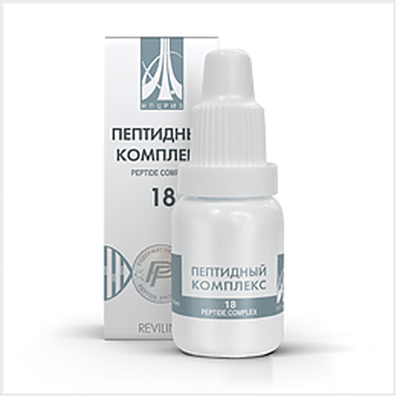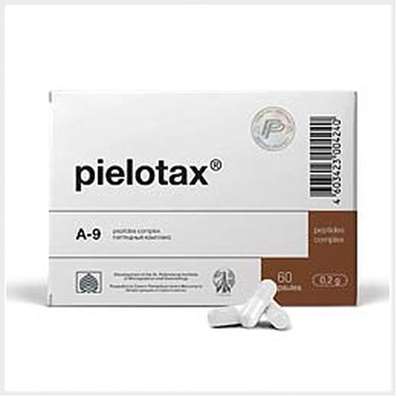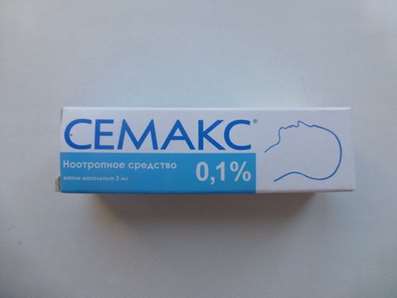Instruction for use: Acridilole
I want this, give me price
Trade name of the drug – Acridilole
Dosage Form: tablets
Composition (per tablet): in blisters of 10 pcs .; in a stack of cardboard 3 packaging.
Excipients: ludipress; sodium starch glycolate; magnesium stearate
Description of Acridilole
Tablets from white to white with Valium a color shade. Slight "marbling".
Tablets 12.5 mg: square with rounded corners, lenticular Phillips scored on one side and engraved "AL1" - on the other.
Tablets 25 mg: oval, biconvex with partial serration on both sides and engraved "AL2" - on one.
Pharmacotherapeutic group: Alpha- and beta-blockers
ATC C07AG02 Carvedilol
The nosological classification (ICD-10)
I10 Essential (primary) hypertension: hypertension; Arterial hypertension; Arterial hypertension crisis course; Essential Hypertension; Essential hypertension; Essential hypertension; Essential hypertension; Essential hypertension; Primary hypertension; Arterial hypertension, complications of diabetes; The sudden increase in blood pressure; Hypertensive disorders of blood circulation; hypertensive condition; hypertensive crises; arterial Hypertension; malignant Hypertension; Hypertonic disease; hypertensive crises; accelerated hypertension; malignant hypertension; The aggravation of hypertensive disease; Transient hypertension; Isolated systolic hypertension
I15 Secondary hypertension: Arterial hypertension, complications of diabetes; hypertension; The sudden increase in blood pressure; Hypertensive disorders of blood circulation; hypertensive condition; hypertensive crises; hypertension; arterial Hypertension; malignant Hypertension; hypertensive crises; accelerated hypertension; malignant hypertension; The aggravation of hypertensive disease; Transient hypertension; hypertension; Arterial hypertension; Arterial hypertension crisis course; renovascular hypertension; Hypertension symptomatic; Renal hypertension; Renovascular hypertension; renovascular hypertension; Symptomatic hypertension
I20 Angina [angina]: Heberden disease; Angina pectoris; The attack of angina pectoris; recurrent angina; Spontaneous angina; Stable angina pectoris; Angina rest; Angina progressing; Angina mixed; Angina spontaneous; stable angina; Chronic stable angina; Angina Syndrome X
I50.0 Congestive heart failure: anasarca heart; Decompensated congestive heart failure; Congestive heart failure; Congestive heart failure with high afterload; Congestive chronic heart failure; Cardiomyopathy with severe chronic heart failure; Compensated chronic heart failure; Swelling with circulatory failure; Edema of cardiac origin; Swelling of the heart; Edematous syndrome in diseases of the heart; Edematous syndrome in congestive heart failure; Edematous syndrome in heart failure; Edematous syndrome in heart failure or liver cirrhosis; right ventricular failure; Congestive Heart Failure; Heart failure stagnant; Heart failure with low cardiac output; Heart failure is a chronic; Cardiac edema; Chronic decompensated heart failure; Chronic Congestive Heart Failure; Chronic heart failure; Change of liver function in heart failure
Application of a substance Acridilole:
Primary open angle glaucoma disease at different stages and with different degrees of increased intraocular pressure, secondary glaucoma.
Pharmacological Properties of Acridilole
Pharmachologic effect - Mode of action - antianginal, hypotensive.
Pharmacoduamics
Carvedilol has combined nonselective β1-, β2- and α1-blocking action. It does not own sympathomimetic activity, it has membrane stabilizing properties. Due to the blockade of β-adrenergic receptors of the heart can decrease blood pressure, cardiac output and heart rate slows. Carvedilol suppresses the renin-angiotensin-aldosterone system blockade by .beta.-adrenergic receptors of the kidneys, causing a reduction in plasma renin activity. Α-adrenoceptor blocking, the drug can cause expansion of peripheral blood vessels, thereby reducing systemic vascular resistance. The combination of β-adrenoceptor blockade and vasodilation provides the following effects: in patients with arterial hypertension - blood pressure reduction; in patients with coronary heart disease - anti-ischemic and anti-anginal action; in patients with left ventricular dysfunction and circulatory failure - favorably influences hemodynamics, improves left ventricular ejection fraction and reduces its size.
Pharmacokinetics
Rapidly absorbed from the gastrointestinal tract. It has a high lipophilicity. Cmax in the blood is reached after 1-1.5 hours. Associated with the plasma protein to 95-99%. Bioavailability -. 24-28 h food intake does not affect the bioavailability. It is metabolized in the liver with the formation of a number of active metabolites, 60-75% of the adsorbed drug is metabolized at a "first pass" through the liver. The metabolites have a strong antioxidant and adrenoceptor blocking action. Excreted through the digestive tract. T1 / 2 is 6-10 hours. The pharmacokinetic parameters of carvedilol substantially unchanged If the kidney function.
Patients with hepatic impairment systemic bioavailability of carvedilol is increased by reducing the metabolism in the "first pass" through the liver. In severe hepatic dysfunction, carvedilol is contraindicated.
Carvedilol crosses the placental barrier, excreted in breast milk.
Indications for Acridilole
Arterial hypertension (monotherapy or combination with diuretics), chronic heart failure (in combination therapy), coronary heart disease: stable angina.
Contraindications for Acridilole
Hypersensitivity to carvedilol or other components of the drug, acute and decompensated chronic heart failure, severe liver failure, AV block II-III degree, bradycardia (less than 50 u. / Min), sick sinus syndrome, hypotension (Sad less than 85 mm Hg . v.), cardiogenic shock, chronic obstructive pulmonary disease, the age of 18 years (effectiveness and safety have been established).
Precautions: angina Prinzmetal, thyrotoxicosis, peripheral vascular occlusive disease, pheochromocytoma, psoriasis, kidney failure, AV block I degree, extensive surgery and general anesthesia, diabetes, hypoglycemia, depression, myasthenia gravis.
Pregnancy and breast-feeding
Controlled trials of carvedilol in pregnant women has not been conducted, therefore, use of the drug in these patients is only possible in cases where the benefit to the mother outweighs the potential risk to the fetus. Do not breastfeed during treatment with carvedilol.
Acridilole Dosage and Administration
Inside, regardless of meals.
Arterial hypertension
The initial dose is 1 mg 6,25-12,5 once daily for the first 2 days of treatment. Then 25 mg 1 time per day. When failure antihypertensive effect after 2 weeks of treatment, the dose may be increased by 2 times. The maximum recommended daily dose is 50 mg 1 time per day (possibly split into 2 admission).
CHD
The starting dose of 12.5 mg 2 times a day during the first two days of treatment. Then 25 mg 2 times a day. At insufficiency antianginal effect after 2 weeks of treatment, the dose may be increased by 2 times. The maximum recommended daily dose is 100 mg per day, divided into 2 doses.
Chronic heart failure
Dose picked individually, under the close supervision of a physician. The recommended starting dose is 3.125 mg 2 times a day for 2 weeks. With good tolerance dose increased at intervals of at least 2 weeks to 6.25 mg 2 times a day, then to 12.5 mg 2 times a day, then - to 25 mg 2 times a day. The dose should be increased to the maximum, which is well tolerated by patients. In patients weighing less than 85 kg target dose is 50 mg per day; in patients weighing more than 85 kg target dose - 75-100 mg per day.
Side effect of Acridilole
CNS: dizziness, headache (usually not severe and early treatment), loss of consciousness, myasthenia gravis (usually at the beginning of the treatment), fatigue, depression, sleep disturbance, paresthesia.
Since the cardiovascular system: bradycardia, orthostatic hypotension, AV block II-III Article .; rarely - a violation of the peripheral circulation, the progression of heart failure (during increasing doses), lower limb edema, angina, marked reduction in blood pressure.
From the digestive system: dry mouth, nausea, diarrhea or constipation, vomiting, abdominal pain, loss of appetite, increase in liver transaminases.
Hematopoietic system: rarely - thrombocytopenia, leukopenia.
On the part of metabolism: increased body mass index, glucose dysregulation.
Allergic reactions: allergic skin reactions, exacerbation of psoriasis, nasal congestion.
The respiratory system: dyspnea, and bronchospasm (in predisposed patients).
Other: visual disturbances, reduced lacrimation, flu-like symptoms, sneezing, myalgia, arthralgia, pain in the limbs, "intermittent" claudication; rarely - a violation of urination, impairment of renal function.
Overdose of Acridilole
Symptoms: reduction of blood pressure (accompanied by dizziness or syncope), bradycardia. You may experience shortness of breath due to bronchospasm and vomiting. In severe cases, possible cardiogenic shock, respiratory failure, confusion, disturbance of conduction.
Treatment: it is necessary to carry out monitoring and correction of vital signs, if necessary - in the ICU. Symptomatic therapy. It is advisable in / with the introduction of m-anticholinergics (atropine) agonists (epinephrine, norepinephrine).
Interaction
Carvedilol may potentiate the effect of other antihypertensive drugs taken at the same time or drugs that have a hypotensive effect (nitrates).
When combined carvedilol and diltiazem may develop cardiac conduction and hemodynamic instability.
At the same time taking carvedilol and digoxin increases the concentration of the latter and may increase AV of time.
Carvedilol may potentiate the action of insulin and oral hypoglycemic agents, and the symptoms of hypoglycaemia (especially tachycardia) may be masked, so diabetic patients is recommended regular monitoring of blood sugar levels.
Inhibitors of microsomal oxidation (cimetidine) increase, and inductors (phenobarbital, rifampicin) weaken hypotensive effect of carvedilol.
Drugs that reduce the content of catecholamines (reserpine, MAO inhibitors), increase the risk of hypotension and bradycardia.
With simultaneous application of cyclosporine increased the concentration of the latter (recommended daily dose adjustment of cyclosporine).
Co-administration of Clonidine may potentiate antihypertensive and heart rate CCF the inhibiting effects of carvedilol.
General anesthetics enhance the negative inotropic and hypotensive effects of carvedilol.
SPECIAL INSTRUCTIONS for Acridilole
Akridilolom® therapy should be carried out for a long time and should not be discontinued abruptly, particularly in patients with coronary artery disease, because this can lead to a deterioration of the underlying disease. If necessary, the reduction in dose should be gradual, for 1-2 weeks.
At the beginning of therapy or Akridilolom® with increasing doses of the drug in patients, particularly the elderly, may experience excessive reduction in blood pressure, especially when standing up. Needed correction doses. In patients with chronic heart failure in the selection of a dose may increase in heart failure symptoms, the appearance of edema. It is not necessary to increase the dose Akridilola®, recommended the appointment of high doses of diuretics, until the stabilization of the patient.
Recommended continuous monitoring of ECG and blood pressure, while the appointment Akridilola® and BPC, derivatives fenilalkilamina (verapamil) and benzodiazepines (diltiazem), as well as class I antiarrhythmics.
It is recommended to monitor renal function in patients with chronic renal failure, hypotension and congestive heart failure. In case of surgery using general anesthesia should notify the anesthesiologist prior therapy Akridilolom®.
Akridilol® not affect the blood glucose concentration and does not cause tolerance test glucose changes parameters in patients with non-insulin dependent diabetes mellitus.
During treatment should avoid the use of ethanol.
Patients with pheochromocytoma before initiating therapy Akridilolom® to assign alpha-blockers.
Patients wearing contact lenses should bear in mind that the drug may cause a reduction in tearing.
It is not recommended to drive at the beginning of therapy and when the dose is increased Akridilola®. It should refrain from other activities related to the necessity of high concentration and rapid psychomotor reactions.
Manufacturer
Publicly-Traded Company "Chemical-Pharmaceutical Plant"Akrikhin" Russia.
Storage conditions of Acridilole
In a dry, dark place at a temperature no higher than 25 ° C.
Keep out of the reach of children.
Shelf life
3 years.
Do not use beyond the expiration date printed on the package.
Conditions of supply of pharmacies
On prescription.

 Cart
Cart





